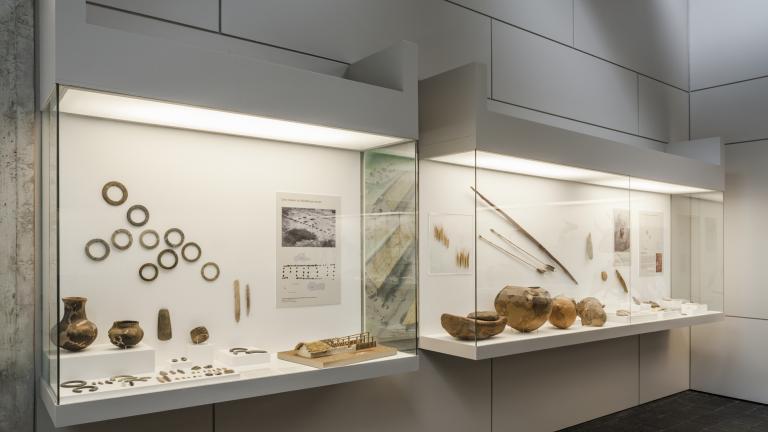Publics
The visit tour
- The main circuit (rooms numbered from 1 to 7), which chronologically traces the general themes of regional Prehistory (duration of the visit about 1:30).
- The advanced circuit (numbered b), has four additional rooms that complete the main circuit.
You can switch from the main to the advanced circuit whenever you wish.
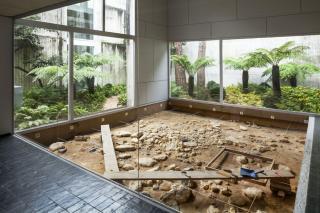
The first room in the museum illustrates how archaeologists work in the field.
A cast of the remains of a nomad hunter camp in the late Palaeolithic (around 12,500 BC), from the Etiolles site (Essonne) shows how an archaeological dig sector is organised.
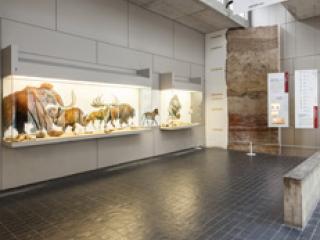
The ancient and middle Palaeolithic is a long period (from about 600,000 to 40,000 BC) of which the climate is marked by alternating periods of cold (glaciations) and periods of warming (interglacial).
A chronological table shows the four major glacial and interglacial periods of the Palaeolithic and the wildlife corresponding.
The displays show the remains of animals from a cold period: woolly mammoths and rhinoceroses, megaceros deer, bison and horses. Despite the absence of known elements from human skeletons for these periods in the region, the presence of man is proved by the discovery of cut stone tools (hand axes in particular), shown in display case n°2.
This room also presents a stratigraphic cross section of Vernou-la-Celle-sur-Seine (Seine-et-Marne), which shows different levels of alluvium deposits from the Seine as well as tuff that contains plant fossils. These fossils have been used to rebuild the landscape of a warm, semi-humid interglacial phase which is shown in the patio-garden adjoining the room.
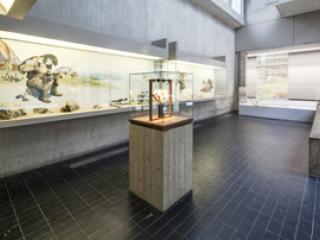
Room 3 covers the late Palaeolithic (40,000 to 9,000 BC). This period is marked by the arrival of modern man (Homo sapiens) and the disappearance of Neanderthal man.
During this period, tools are made of flint flakes. The discovery of large tool-making workshops in Étiolles and Tarterets (Essonne) allowed archaeologists to understand the techniques used to obtain large flint blades up to 60 cm long.
By using raw flint blades or blades worked into tools, Cro-Magnon man made effective weapons to hunt reindeer. They also worked with materials such as wood, reindeer antlers (harpoons, spearheads), bone (needle production) or animal hides (clothing, blankets, tents).
This period sees the emergence of artistic expression which is well known from the caves and rock shelters of south-west France. The Etiolles engraved stone (12,500 BC), newly arrived in the museum, is a very rare example of Palaeolithic art in Île-de-France. The engravings represent horses, reindeer and an imaginary half-man half animal being.
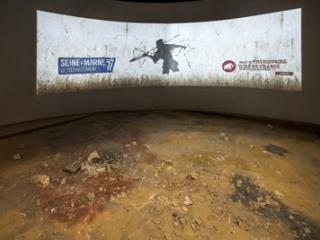
A 60 m2 floor moulding of a dwelling area of the Pincevent site (Seine-et-Marne) is accompanied by a 14-minute audiovisual film explaining how the reindeer hunter camp from about 14,000 years ago was discovered and excavated.
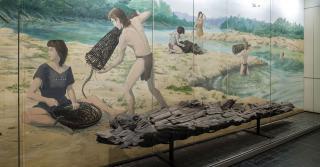
This room, covers the Mesolithic period (from 9,500 to 5,100 BC) and shows an exceptional object: a pine dugout canoe, one of the oldest currently known boats (7,000 BC). It was discovered in Noyen-sur-Seine (Seine-et-Marne) in 1984, with other wooden remains (fragments of fish traps).
From 10,000 BC, there is global warming: forests grow and species such as deer, roe deer and wild boar proliferate. Man then masters a new weapon that is more effective in the forest: the bow. The arrowheads consist of small geometrically shaped flints, several of which are on display in room 3 b.
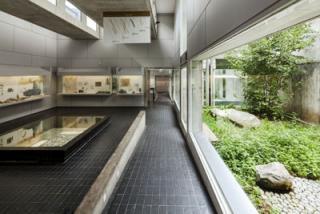
The Neolithic period (from 5,100 to 2,300 BC) is a period of considerable change in the history of mankind: agriculture, livestock, pottery, weaving and stone polishing appear along with the first settled villages.
Display case n°1 houses a model of a dwelling found on the Marolles-sur-Seine site (Seine-et-Marne). These so-called Danubian dwellings are rectangular. Their dimensions are large (usually 30 metres long and 6 to 8 metres wide). They show the progression, along the Danube, of the new ways of life and know-how that reached our region a few thousand years ago thanks to the exchanges and contacts between populations. This display case also exhibits many objects found in and around these dwellings.
Around 3,500 BC, in the Middle Neolithic, fortified dwelling sites start to appear. The Noyen-sur-Seine site (Seine-et-Marne) has a system of entrenched ditches enclosing a meander of the Seine. It has yielded up many pottery and flint tool remains.
The room presents the Jablines flint mines (display case n°4) and the process of making hand axes, for polishing on polishers similar to the one on the adjoining patio. Burial rites evolve and diversify, as shown by the group tombs in Grande-Paroisse and in and Balloy (Seine-et-Marne), the furniture and the model of the covered Presles covered walkway (Val d'Oise) and all the tombs displayed in room 6 b.
At the very end of the Neolithic period, the first metal objects made their appearance (copper bead from Marolles-sur-Seine).
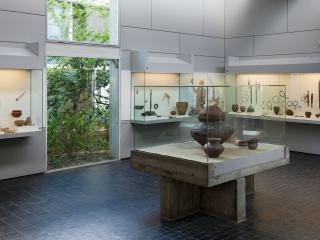
Display case n°1 shows a facsimile of a bronze-maker’s furnace. The bronze weapons, tools and jewellery shown in the following display cases were found either individually or in groups. These are mainly deliberate deposits, even though it is not always possible to know why they were made.
At the end of the Bronze Age, cremation became widespread: this is shown by cremation tomb n°5 at Marolles-sur-Seine "Les Gours-aux-Lions" (Seine-et-Marne), exhibited in the centre of the room. Many other examples of cremations or burials from the late Bronze Age to the beginning of the Iron Age, are exhibited in Room 7 b.
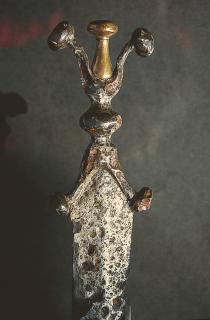
This room also displays remains from the Iron Age. Similarly to bronze, iron making processes developed very gradually.
Display case n°5 exhibits a few objects dating from the first Iron Age (or Hallstatt period), Chartrettes (Seine-et-Marne) pottery, bronze bracelets found in Châtenay-sur-Seine (Seine-et-Marne) and bronze axes that are characteristic of this period.
During the second Iron Age (or The Tène period), the use of iron became widespread and diversified. Display case n°6 exhibits pottery and objects from dwellings and tomb artefacts, including a moulding of a beautiful dagger, an exceptional object found in Châtenay-sur-Seine, and an Italian-Celtic bronze plate helmet.
Gallic currencies and Roman imports (amphorae) testify to the gradual transition to historical times. The conquest of Gaul by Julius Caesar between 58 and 51 BC, greatly accelerated the romanisation begun in the south of France three generations earlier. The introduction of writing marks the end of prehistoric times. The last display case shows the Gallo-Roman world and its crafts including the beautiful glass objects from Bailleul-sur-Thérain (Oise).
